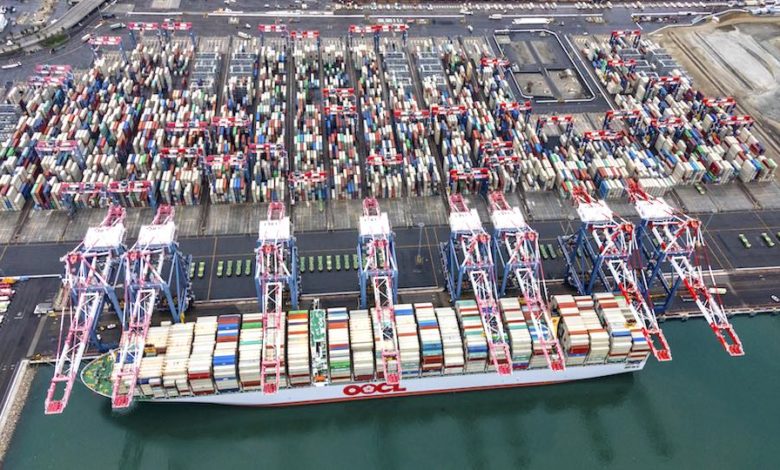Demand-led spikes are over for container shipping

The demand-led spikes seen during the pandemic that propelled container shipping to record earnings are now a thing of the past, according to new analysis from Copenhagen-based Sea-Intelligence.
Sea-Intelligence has run the numbers on supply and demand during the covid era, and its conclusions add to the growing consensus that volumes are slipping, and it is only supply chain chaos such as port congestion that is helping prop up rates.
Global demand was consistently at a level 10% higher than capacity, from November 2020 to January 2022, according to Sea-Intelligence.
However, the gap has been narrowing, and the most recent data from June, shows a gap down to 2% versus the pre-pandemic levels.
“All in all, what the data shows is that the extreme spikes in freight rates in 2021 were indeed driven by a situation where demand suddenly exceeded capacity at a global level – but it can also be clearly seen that this was an effect primarily driven by the unavailability of capacity,” Sea-Intelligence argued in its latest weekly report.
The recent trend towards normalisation has in turn also been primarily driven by gradual improvements in schedule reliability and vessel delays, Sea-Intelligence suggested, going on to predict that the supply/demand balance will continue to decline, and freight rates will be under increasing downwards pressure.
“Spot freight rates continue to roll over amid absent peak season demand,” a new container shipping report from HSBC stated today, noting how in Q3 so far, seasonally a strong quarter, the Shanghai Containerized Freight Index (SCFI) has declined 8% quarter-on-quarter on average while the China Containerized Freight Index(CCFI) is up just 1% quarter-on-quarter.
In its market update for August, CH Robinson, a freight forwarder, cautioned that appetite for imports was decreasing due to inflation and inventory build-up in the US and Europe even as congestion persists and labour strikes in Europe disrupt port productivity.
Drewry’s composite World Container Index decreased by 3% to $6,223.82 per feu last week. It stands 35% lower than the same week in 2021, but remains 71% higher than the five-year average of $3,631.
However, high contract rates have more than recompensed for a falling spot market, with liners widely forecast to register another record year of earnings.

Mr Chambers,
Most of what you have stated is quite correct.
You have, however, overlooked the effect of some 6-8 Million teu that were not retired during the Covid era.
(Of course, the assumption here is that Covid is now an endemic).
When this lot hits the happy hunting grounds for containers ….. there could be a correction!
Rgds